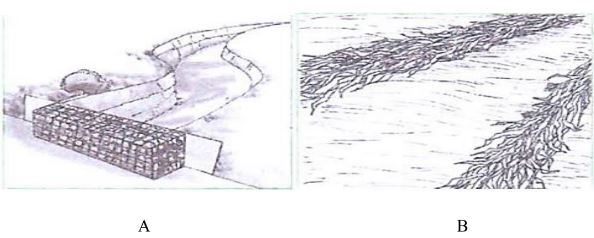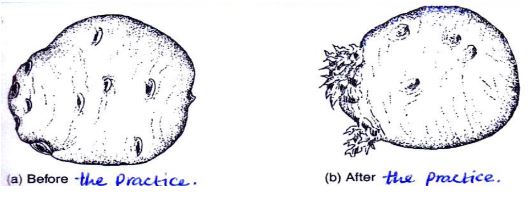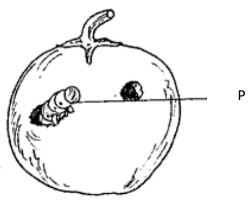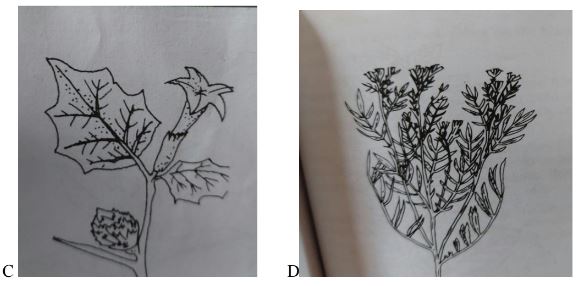AGRICULTURE
PAPER 1
INSTRUCTIONS TO CANDIDATES:
- This paper consists of three sections A, B and C.
- Answer all the questions in section A and B.
- Answer any two questions in section C.
- Candidates should answer all the questions in English.

Questions
SECTION A (30 MARKS)
- State two benefits of optimum soil temperature in crop production (1 mark)
- Name three branches of horticulture.(1 ½ marks)
- State four factors a farmer should consider when choosing the farming system to undertake. (2marks)
- List four methods of farming (2marks)
- Give four pieces of information found on a delivery note. (2marks)
- State four reasons for deep ploughing during land preparation. (2marks)
- Give four soil factors that influence soil productivity. (2 marks)
- Give three factors affecting elasticity of demand
- Differentiate between seed inoculation and seed dressing. (1mark)
- State four effects of soil erosion. (2marks)
- Outline four practices necessary to improve and maintain permanent pastures. (2marks)
- State four factors that affect the rooting of cuttings in tea and sugar cane. (2 marks)
- State four reasons for mulching. (2 marks)
- Give the function of each of the following in the preparation of compost manure. (2marks)
- Top soil
- Well rotten manure
- A thin layer of wood ash
- Long pointed stick
- State four deficiency symptoms of phosphorus. (2 marks)
- State four characteristics of nitrogenous fertilizers. (2 marks)
- Give two reasons why root pruning is done in the nursery management in agro forestry. (1 mark)
SECTION B (20 MARKS)
- The illustrations labelled A and B show some farm structures used in soil and water conservation. Study them carefully and answer the questions that follow.
- Identify structures A and B. (1 mark)
A
B - Name the type of soil erosion controlled by structures A and B. (2 marks)
A
B - State two ways in which the structures help to control soil erosion. (2 marks)
- Identify structures A and B. (1 mark)
- The diagrams below illustrate irish potato seed preparation before planting. Study it carefully and answer the questions that follow.
- Name the practice used in preparing the seed potato above before planting. (1 mark)
- Describe the procedure followed in preparing the seed potatoes for planting. (3 marks)
- Give one reason for carrying out the practice named above. (1 mark)
- The diagram below shows a tomato fruit affected by a pest. Study it carefully then answer the questions that follow.
- Identify the pest labeled P (1 mark)
- State one method used to control the pest. (1 mark)
- State any three factors to consider when selecting tomato fruits for marketing. (3 marks)
- The photographs below show common weeds C and D in pasture land. Study them carefully and answer the questions that follow.
- Identify weeds C and D. (2 marks)
- Classify weed D according to plant morphology. (1 mark)
- State the major problem posed by each of the weeds above in pasture land. (2 marks)
SECTION C (40MARKS)
-
- State five benefits of sowing annual crops early. (5marks)
- Describe eight effects of fragmentation and sub division of land. (8marks)
- Explain how government policies affect agricultural production. (7 marks)
-
- Describe the various field management practices for tomatoes. (8marks)
- State the precautions that should be observed when harvesting cotton. (4marks)
- Explain four importance of crop rotation. (8marks)
-
- Explain four factors to consider in choosing the type of irrigation to use in the farm. (8marks)
- Explain five farming practices that destroy soil structure. (5marks)
- Describe seven reasons why farmers need to keep good farm records. (7marks)

Marking Scheme
- Four benefits of optimum soil temperature
- Enhance seed germination
- Enhances plant growth.
- Enhance soil microbial activities
- Improves quality of crops e.g. Tea, pineapples. (2x 1 =2mks)
- Name three branches of horticulture.
- Floriculture
- Olericulture
- Pomology/pomoculture
- State four factors a farmer should consider when choosing the farming system to undertake. (2mks)
- Size of the farm.
- Type of soil in the area.
- Government policy.
- Aims of the enterprise.
- Farmers knowledge and skills.
- Environmental factors.
- Availability of resources/capital
- Cultural factors.
- List four methods of farming. (2mks)
- Agro forestry
- Mixed farming
- Organic farming
- Nomadic farming
- Shifting cultivation ( 1⁄2 x4 marks )
- Four pieces of information contained on a delivery note
- date of delivery
- Name of supplying company
- Name of person receiving the goods
- Identity and Quantities delivered
- State in which the goods are delivered
- State four reasons for deep ploughing during land preparation. (2mks)
- To improve soil aeration.
- Facilitates good drainage.
- Breaks hard pans/ facilitates
- Bringing up to the surface previously leached nutrients.
- Removes deep rooted weeds.
- Exposes soil borne pests to ash conditions hence controlling them.
- Exposes lower soil layers to weathering agents.
- Four soil factors that influence soil productivity
- Soil depth / drainage / aeration
- Water holding capacity
- Level of nutrients / cation exchange
- Soil pH/ Soil borne – pests and diseases. (4x 1⁄2 =2 mks)
(2mks)
- Give three factors affecting elasticity of demand.
- Availability of substitutes
- Proportion
- Degree of necessity
- Number of uses the product can be put to
- Time lag
- Time span
- Differentiate between seed inoculation and seed dressing. (1mk)
- This Seed inoculation is the coating of leguminous seeds with an inoculant to encourage nodulation and hence nitrogen fixation especially in areas where soil is deficient in nitrogen while seed dressing is the coating of seeds with a fungicide or insecticide or combination of the two chemicals to protect the seedlings from soil borne diseases and pests eg in cereals and legumes.
- This Seed inoculation is the coating of leguminous seeds with an inoculant to encourage nodulation and hence nitrogen fixation especially in areas where soil is deficient in nitrogen while seed dressing is the coating of seeds with a fungicide or insecticide or combination of the two chemicals to protect the seedlings from soil borne diseases and pests eg in cereals and legumes.
- State four effects of soil erosion. (2mks)
- The eroded productive top soil is lost forever.
- Soil micro-organisms are also carried away with the top soil some of which break up soil organic matter to humus.
- Deposition of eroded materials in dams and rivers turn them into shallow swamps and pools creating silting problems.
- Sedimentation and siltation in lakes, rivers and fish ponds lead to decline in fish production.
- Excessive surface run-off causes a lot of damage by exposing underground water pipes and destroying roads.
- Outline four practices necessary to improve and maintain permanent pastures. (2mks)
- Controlling weeds.
- Top dressing with nitrogenous fertilizers.
- Practicing controlled grazing in order to prevent land denudation.
- Topping to ensure fresh growth of pastures.
- Factors that affect rooting in Tea and Sugar cane
- Light intensity
- Level of oxygen supply
- Relative humidity
- Leaf surface area
- State four reasons for mulching. (2mks)
- Prevents water evaporation thus maintaining moisture in the soil for crop use.
- Acts as an insulator thus modifies or regulates the soil temperature.
- Controls soil erosion by reducing the speed of running water intercepting the rain drops and increasing the rate of infiltration.
- Controls weeds by suppressing their growth.
- Organic materials improve soil fertility by releasing nutrients after decomposition.
- Decomposition of organic matter results into humus that improves soil structure and water holding capacity.
- Give the function of each of the following in the preparation of compost manure. (2mks))
- Top soil
- Provide micro-organisms which help in decomposition.
- Provide micro-organisms which help in decomposition.
- Well rotten manure
- Provides nourishment for the micro-organisms that break down the materials.
- Provides nourishment for the micro-organisms that break down the materials.
- A thin layer of wood ash
- To improve the level of phosphorus and potassium in the resulting manure.
- It also reduces acidity produced during fermentation.
- Long pointed stick
- To check the temperature of the manure.
- To check the temperature of the manure.
- Top soil
- State four deficiency symptoms of phosphorus. (2mks)
- Increased production of anthocyanin.
- Stunted growth.
- Poor root development and establishment.
- Flowering, fruit and seed development are inhibited.
- Tubers of root crops fail to get established or are very small eg sweet potatoes.
- Lateral buds remain dormant leading to less branching.
- Leaves fall prematurely.
- State four characteristics of nitrogenous fertilizers. (2mks)
- They are highly soluble in soil water/ they are easily leached to lower horizons/ they have a short or no residual effect.
- Have a scorching or burning effect on plants.
- They are highly volatile.
- They are hygroscopic.
- Most of them are highly corrosive.
- Reasons for root pruning. (1 mark)
- Make lifting of seedlings during transplanting easier.
- To minimize root damage during transplanting.
- For seedlings to develop short and dense root system.
- The illustrations labelled A and B show some farm structures used in soil and water conservation. Study them carefully and answer the questions that follow.
- Identify structures A and B. (1mk)
- A-Gabion.
- B-Trash lines.
- Name the type of soil erosion controlled by structures A and B. (2mks)
- A-Gully erosion.
- B-Sheet or rill erosion.
- State two ways in which the structures help to control soil erosion. (2mks)
- They reduce the speed of run-off.
- They trap eroded soil particles.
- Identify structures A and B. (1mk)
- The diagrams below illustrate irish potato seed preparation before planting. Study it carefully and answer the questions that follow.
- Name the practice used in preparing the seed potato above before planting. (1mk)
- Chitting/sprouting
- Chitting/sprouting
- Describe the procedure followed in preparing the seed potatoes for planting. (3mks)
- Arrange the setts/tubers in a store/ chitting box with the rose ends facing upwards.
- Tubers are arranged 2 to 3 layers deep
- Allow diffused light through the store. This encourages the production of short, green and healthy sprouts.
- Dust/ spray the setts/tubers with an appropriate insecticide to control aphids, tuber moths.
- Sprinkle some water on the tubers if the conditions are dry.
- Give one reason for carrying out the practice named above. (1mk)
- It ensures uniform sprouting /establishment in the field after planting.
- It ensures uniform sprouting /establishment in the field after planting.
- Name the practice used in preparing the seed potato above before planting. (1mk)
-
- American bollworm ( 1x1=1mk)
-
- Chemical method
- Early planting
- Rogueing
- Trap-cropping (1⁄2 x 4 = 2mks)
-
- Degree of ripeness
- Colour
- Size
- Shape
- Wholesomeness
- Whether processing or fresh market variety (1x2 =2mks)
- American bollworm ( 1x1=1mk)
- The illustrations below show common weeds C and D in pasture land. Study them carefully and answer the questions that follow.
- Identify weeds C and D. (2mks)
- C- Thorn apple/ Datura stramonium
- D- Mexican marigold / Tagetes minuta
- Classify weed D according to plant morphology. (1mk)
- Broad leafed.
- Broad leafed.
- State the major problem posed by each of the weeds above in pasture land. (2mks)
- C-Poisonous to livestock.
- D-It taints milk when fed to lactating cows.
- Identify weeds C and D. (2mks)
-
- State five benefits of sowing annual crops early. (5mks)
- Enables the crop to withstand competition from weeds.
- Enables the crop to escape attack by pests and diseases.
- To better utilization of nutrients in the soil.
- For better utilization of available rainfall.
- To get good market.
- To reduce competition for labour.
- To time harvesting to occur during appropriate weather conditions.
- Describe eight effects of fragmentation and sub division of land. (8mks)
- Time is wasted while travelling from one holding to another or from the farmstead to the various fragments.
- Proper and effective control of weeds and pests become difficult since the fragments are surrounded by other farmers’ holdings.
- It is difficult to allow a sound farm plan arising from the distribution between fragments and the farmers’ home.
- It is difficult to supervise the scattered plots.
- Control of livestock parasites and diseases will become difficult.
- It is difficult to carryout various soil conservation measures especially without the cooperation and concerted efforts from all the farmers.
- The size and shape of such holdings may be such that it is virtually impossible for the farmers to restrict grazing in one holding only.
- There are difficulties of offering agricultural extension advice.
- Agricultural productivity remains poor resulting in low standards of living.
- How government policies affect agricultural production (7mks)
- Heavy taxation of imports in order to protect local industries.
- Subsidizing the growing of locally produced commodities. This makes commodities cheap and affordable by farmers.
- Quality control i.e. controls the production of high quality goods for export and domestic markets.
- Conservation of natural resources to sustain agriculture.
- Stepping up the control of diseases and parasites that affect crops and livestock e.g. by imposing of quarantine, vaccination of animals.
- Motivating agriculture extension workers so that they can disseminate modern farming techniques.
- Encouraging and providing farmers training.
(7 x 1 = 7mks )
- State five benefits of sowing annual crops early. (5mks)
-
- Describe the various field management practices for tomatoes. (8mks)
- Gapping-Any seedlings that dries after transplanting should be gapped to maintain the correct plant population.
- Top dressing-At 25-30cm high tomato plants should be top dressed with nitrogenous fertilizers at the rate of 100kg CAN or SA per ha.
- Weeding-The field should be kept weed free. Hand cultivation is done to control weeds.
- Care must be taken not to injure tomato roots and stems during weeding.
- Staking-This is the practice of supporting tomatoes especially tall varieties using sticks which are about 2m high.
- Pruning-This encourages the development of large fruits and controls upward growth.
- Tomato pests eg American bollworm are controlled using appropriate pesticides to improve quality of fruits.
- Tomato diseases like tomato blight, bacterial wilt and blossom-end rot should be controlled using the appropriate ways.
- Mulching to conserve moisture and smother weeds.
- Watering early in the morning and late in the evening during dry weather conditions.
(Any eight practices well described)
- State the precautions that should be observed when harvesting cotton. (4mks)
- Picking should be done immediately the bolls open/split to prevent staining by dust.
- Picking should be done when the lint is dry to prevent fibres from sticking together.
- Use clean containers for picking to avoid contamination.
- Hands should be clean to avoid staining of the lint.
- Do not mix cotton with foreign matter eg leaves and small twigs.
- Use separate containers for separate cotton grades to ensure quality.
- Avoid using sisal bags for collecting the bolls because their fibres may mix with the seed cotton thus creating problems during ginning. (Any four)
- Explain four importance of crop rotation. (8mks)
- Maximum utilization of nutrients- Alternating shallow with deep rooted crops ensures that nutrients from different layers are well utilized.
- Control of soil borne pests and disease build up- Eg root eelworms in pyrethrum. Pests and diseases are specific to various crops.
- Control of weeds -Parasitic weeds eg witch weed (Striga weed) are susceptible to grass family crops and can be controlled by planting non grass crops for some time.
- Improvement of soil fertility-When leguminous crops are included in the rotation programme, they help in fixing nitrogen with the help of Rhizobium bacteria. This nitrogen is made available for subsequent crops.
- Improvement of soil structure- It is recommended that at the end of the rotation programme a grass ley be established. The roots of grass are so extensive that they bind soil particles together.
- Control of soil erosion-If crops planted in rows eg maize is alternated with cover crops eg sweet potatoes.
- Describe the various field management practices for tomatoes. (8mks)
-
- Explain four factors to consider in choosing the type of irrigation to use in the farm. (8mks)
- Capital availability- Putting up irrigation structures requires money
- Topography of the land- For flood irrigation the land ought to be level enough. Furrow irrigation is only possible on gentle sloping land.
- Water availability-If water is limited; drip irrigation will be preferred offer sprinkler irrigation.
- Type of soil- Heavy soils such as clayey is suitable for furrow irrigation.
- Type of crop to be irrigated- For rice growing basin irrigation is preferred over sprinkler irrigation
- Explain five farming practices that destroy soil structure. (5mks)
- Over cultivation which leads to pulverization of soil ie breaking soil into fine particles.
- Use of heavy machinery to cultivate soil.
- Cultivation at the wrong time such as when soils are too wet or too dry.
- Deforestation exposes soil to erosion hence destruction of soil structure.
- Overstocking/overgrazing exposes soil to erosion hence destruction of soil structure.
- Burning of vegetation-Destroys organic matter leading to the destruction of soil structure.
- Monocropping/ monoculture- This is the practice of growing one type of crop in a farm or one piece of land without alternating which may lead to destruction of soil structure. (Any five)
- Describe seven reasons why farmers need to keep good farm records. (7mks)
- They help a farmer in planning and making decisions in the farm.
- Help to compare the performance of different enterprises within a farm or other farms.
- Show the history of the farm.
- Guide a farmer in planning and budgeting of farm operations.
- Help to detect losses or theft on the farm.
- Help in the assessment of income tax to avoid over or under taxation.
- Help to determine the value of the farm or to determine the assets and liabilities of the farm.
- Makes it easy to share the profits and losses in partnership.
- Helps in settling disputes among heirs eg if a farmer dies without a will.
- Helps to show whether the farm business is making profits or losses.
- Provides information to help determine a farmer’s credit worthiness.
- Helps in supporting insurance claims on death, theft and fire of farm assets.
- Provide labour information like terminal benefits eg NSSF dues.
(any seven)
- Explain four factors to consider in choosing the type of irrigation to use in the farm. (8mks)
Download Agriculture Paper 1 Questions and Answers - Royal Exam Series Post Mock Trial Exams 2022.
Tap Here to Download for 50/-
Get on WhatsApp for 50/-
Why download?
- ✔ To read offline at any time.
- ✔ To Print at your convenience
- ✔ Share Easily with Friends / Students





